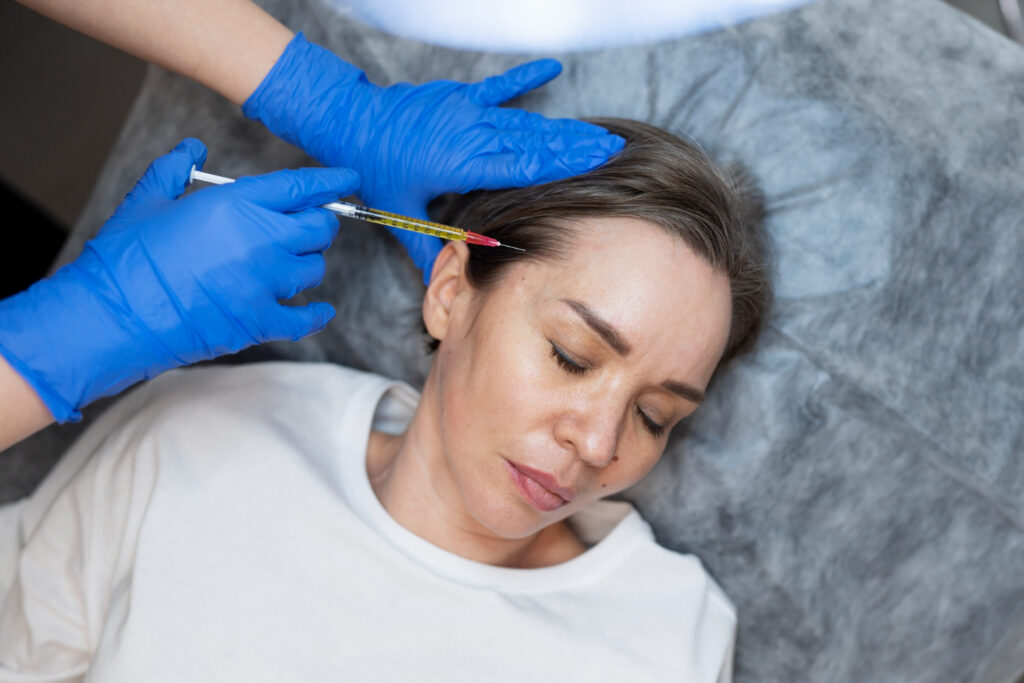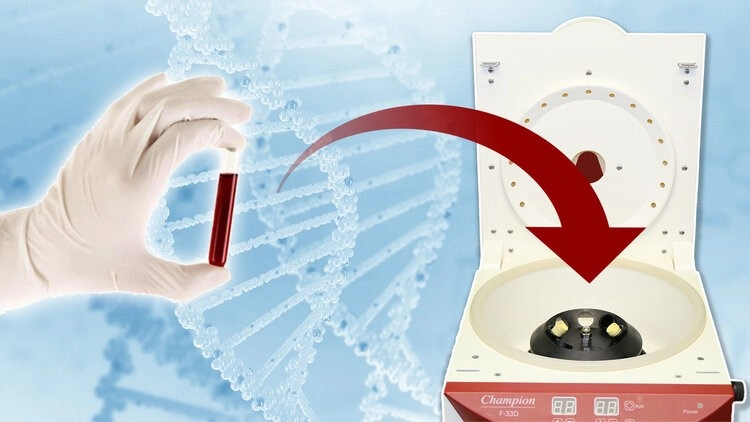
Platelet-Rich Plasma/PRP therapy is a treatment that uses a patient’s own blood components to stimulate healing and regeneration in various parts of the body. It involves drawing a small amount of blood, processing it in a centrifuge to concentrate the platelets, and then injecting this platelet-rich plasma into specific areas of the body.
Platelets, also known as thrombocytes, are a component of blood whose primary function is to stop bleeding by clumping and clotting blood vessel injuries. Beyond their role in clot formation, platelets are rich in proteins known as growth factors, which are vital for healing.
When platelets are activated in the case of therapies like PRP—they release growth factors. These growth factors are key signaling molecules that play several roles ,Once injected, the growth factors released by the platelets begin their work.
They promote cell proliferation and help these cells differentiate into the types needed for repair, such as new skin or tendon cells.
By promoting angiogenesis, which is the formation of new blood vessels, they ensure that the repair site receives ample nutrients and oxygen.
They assist in building the extracellular matrix, which provides a scaffold for new tissue growth.

Typically, about 20-60 milliliters of blood is drawn from the patient’s arm, similar to a routine blood test. This step is performed using sterile equipment to prevent any infection.

The collected blood is placed in a centrifuge machine, which spins the blood at high speeds. This process separates the blood components based on their density.Blood typically separates into three layers: red blood cells at the centrifugation bottom, platelet-poor plasma (PPP) at the top, and a’buffy coat’ that contains a concentrated amount of platelets and white blood cells in the middle.

The buffy coat, along with some of the plasma, is extracted using a syringe, careful to avoid mixing with the red blood cells.The extracted plasma, now rich in platelets, is prepared for injection. This might involve further steps to activate the platelets to release growth factors.

The PRP is injected into the affected area, which could be joints, tendons, scalp, or skin, depending on the treatment goal. Ultrasound or other imaging techniques may be used to guide the injection precisely. Sometimes, local anesthesia is used to minimize discomfort during the injection process.
Begin your journey with a comprehensive consultation with a skilled dermatologist who will detail the PRP procedure, benefits, risks, and set realistic expectations based on your goals. The consultation includes an evaluation of your medical history to ensure PRP therapy is suitable for you.
Ahead of your PRP session, it's crucial to halt the intake of blood thinners like aspirin or ibuprofen several days prior, as these can affect the healing outcomes. You'll also need to fast—refraining from eating or drinking—for at least two hours before the treatment to prepare your body.
On treatment day, a small sample of your blood will be drawn, similar to a standard blood test. This sample is then centrifuged to enrich the platelets. Concurrently, a Dermapen micro-needling treatment is administered to prepare the skin. The dermatologist will then inject the concentrated PRP into the targeted area using fine needles, tailored to the size and specific needs of the treatment zone. For optimal results, we recommend three sessions, spaced 4-6 weeks apart, with noticeable improvements in skin texture appearing within the first month and full collagen regeneration within three months, enhancing a youthful complexion and reducing wrinkles.
After receiving PRP injections, some patients may notice mild swelling and bruising at the injection sites, which typically subside within a few days. Most individuals can resume their usual activities immediately, although some may require a brief period of reduced activity depending on the treatment specifics.
While some patients notice improvements after just one session, typically 3 sessions spaced 4-6 weeks apart are recommended for optimal results. The exact number can vary based on the individual’s condition and treatment goals.
Common side effects include mild pain, swelling, and bruising at the injection site. These symptoms usually resolve within a few days. More serious side effects like infection are rare but possible.
Initial improvement can be noticed as soon as a few weeks after treatment with full collagen regeneration and more significant results appearing within 3 months. The results can vary depending on the individual’s healing response and the area treated.
PRP therapy is often not covered by insurance as it is considered experimental for many conditions. It is advisable to check with your insurance provider for specific coverage details.
Yes, most patients can resume their normal activities immediately after their PRP session. However, it is advised to avoid strenuous activities for the first 24-48 hours to minimize swelling and discomfort.